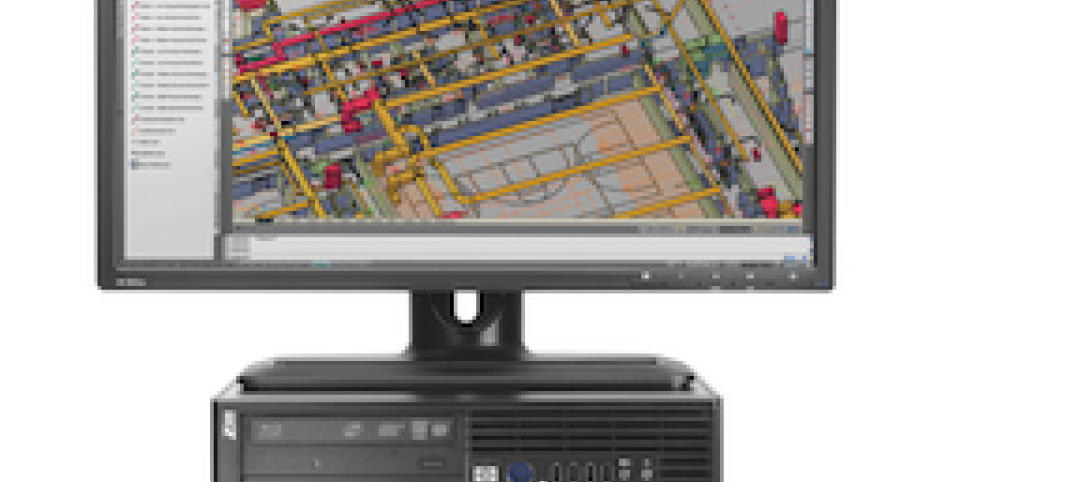An expanding engineering and construction industry faces a digital future that is not only reshaping cities but also how the industry’s businesses operate.
This is one of the key observations that Deloitte Consulting presents in its recent paper “2019 Engineering and Construction Industry Outlook.” The paper’s author—Michelle Meisels, Principal and Engineering and Construction Leader—emphasizes the centrality of data analysis in the ability of the industry to deliver urban projects for cities whose buildings and infrastructures are becoming “smarter” and more connected.
Deloitte anticipates that the industry’s growth in the U.S.—estimated at around 5% in 2018—will continue next year. Merger-and-acquisition activity, which this year has accounted for at least 344 deals valued at more than $20 billion, is allowing EC firms to compete for megaprojects “infused with advanced technologies.”
Meisels sees cities as growth engines for the U.S. economy and its society. However, America’s crumbling infrastructure right now isn’t up to the task of keeping pace with urbanization. She’s optimistic, though, about the willingness of cities around the world to invest in “connected infrastructure” that enables better management of urban assets such as public transit, wastewater systems, and roads. Meisels cites one estimate, from IDC, which projects that smart cities’ spending will reach $158 billion globally by 2022, with Singapore, Tokyo and New York being among the top spenders.
These investments should help to create digital touchpoints of connectivity between people and their vehicles, homes, and workplaces. What would advance this movement, says Meisels, is “a clearly articulated strategy for leveraging advanced technologies like the Internet of Things (IoT), analytics, and artificial intelligence.” She points specifically to the recently announced alliance between AECOM and Arrow Electronics as an example of how scale and digital are intersecting.
Digital, in fact, is transforming how engineering and construction companies run their companies. Such things as robotic process automation and BIM are evolving and improving in ways that are making project development and management far more efficient and less costly. Meisels also speaks of “connected construction” tools, such as drones, wearables, and augmented reality, that are “revolutionizing” job sites, improving worker productivity and safety, and capturing valuable data.
Meisels believes that data and analytics will become the industry’s future core. But data are coming from outside traditional ERP systems, so companies need to devise a strategy to analyze this torrent of information “to deliver smart buildings and smart cities projects, identify and address diminishing margins, and manage increasing project size and complexity.”
Companies can use a data-driven approach to unlock smart decision making, identify the optimal location for their project, and source the best materials to use, all through an interface that enables decision makers to ask questions and work through scenarios.
This analytical approach might also provide some answers to a problem that continues to vex EC firms across the country: finding and retaining talent.
The U.S. construction industry has been consistently adding workforce, and currently employs around 7.2 million professionals, the highest levels since the Great Recession of 2008. But that’s still an 18-year low. “Labor shortages are reaching crisis proportions and are expected to continue through 2019,“ predicts Meisels.
Today, winning the talent war includes projecting a positive brand for your company out to the market—one that reflects the advanced technologies that are part of the connected construction site. To appeal to new generations entering the workforce, that brand should also showcase the sustainability initiatives that many firms have adopted.
On a fundamental level, Meisels tells EC firm that their talent search should be buttressed by their support of apprenticeships and technical schools. “And considering the rise of digital, it is also important to understand how skills are changing and then design a talent management strategy that reflects this,” she recommends.
Related Stories
| Nov 5, 2010
New Millennium’s Gary Heasley on BIM, LEED, and the nonresidential market
Gary Heasley, president of New Millennium Building Systems, Fort Wayne, Ind., and EVP of its parent company, Steel Dynamics, Inc., tells BD+C’s Robert Cassidy about the Steel Joist Manufacturer’s westward expansion, its push to create BIM tools for its products, LEED, and the outlook for the nonresidential construction market.
| Nov 3, 2010
Sailing center sets course for energy efficiency, sustainability
The Milwaukee (Wis.) Community Sailing Center’s new facility on Lake Michigan counts a geothermal heating and cooling system among its sustainable features. The facility was designed for the nonprofit instructional sailing organization with energy efficiency and low operating costs in mind.
| Nov 3, 2010
Virginia biofuel research center moving along
The Sustainable Energy Technology Center has broken ground in October on the Danville, Va., campus of the Institute for Advanced Learning and Research. The 25,000-sf facility will be used to develop enhanced bio-based fuels, and will house research laboratories, support labs, graduate student research space, and faculty offices. Rainwater harvesting, a vegetated roof, low-VOC and recycled materials, photovoltaic panels, high-efficiency plumbing fixtures and water-saving systems, and LED light fixtures will be deployed. Dewberry served as lead architect, with Lord Aeck & Sargent serving as laboratory designer and sustainability consultant. Perigon Engineering consulted on high-bay process labs. New Atlantic Contracting is building the facility.
| Nov 2, 2010
11 Tips for Breathing New Life into Old Office Spaces
A slowdown in new construction has firms focusing on office reconstruction and interior renovations. Three experts from Hixson Architecture Engineering Interiors offer 11 tips for office renovation success. Tip #1: Check the landscaping.
| Nov 2, 2010
A Look Back at the Navy’s First LEED Gold
Building Design+Construction takes a retrospective tour of a pace-setting LEED project.
| Nov 2, 2010
Wind Power, Windy City-style
Building-integrated wind turbines lend a futuristic look to a parking structure in Chicago’s trendy River North neighborhood. Only time will tell how much power the wind devices will generate.
| Nov 2, 2010
Yudelson: ‘If It Doesn’t Perform, It Can’t Be Green’
Jerry Yudelson, prolific author and veteran green building expert, challenges Building Teams to think big when it comes to controlling energy use and reducing carbon emissions in buildings.
| Nov 2, 2010
Historic changes to commercial building energy codes drive energy efficiency, emissions reductions
Revisions to the commercial section of the 2012 International Energy Conservation Code (IECC) represent the largest single-step efficiency increase in the history of the national, model energy. The changes mean that new and renovated buildings constructed in jurisdictions that follow the 2012 IECC will use 30% less energy than those built to current standards.
| Oct 13, 2010
Test run on the HP Z200 SFF Good Value in a Small Package
Contributing Editor Jeff Yoders tests a new small-form factor, workstation-class desktop in Hewlett-Packard’s line that combines performance of its minitower machine with a smaller chassis and a lower price.















